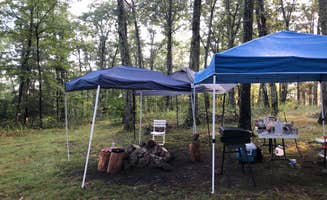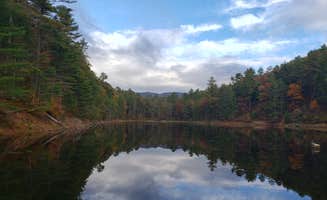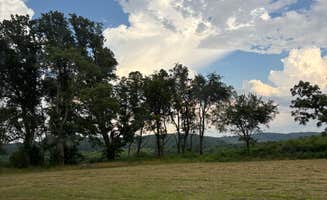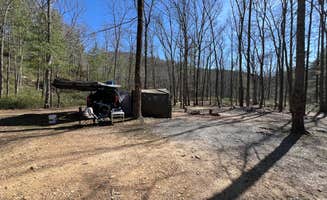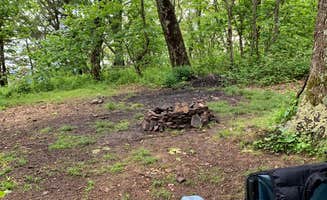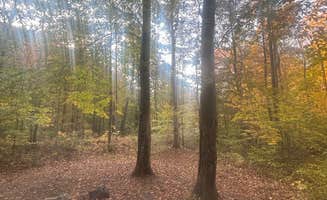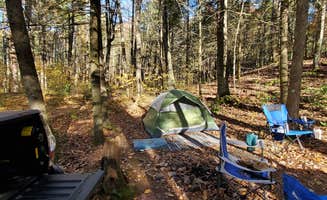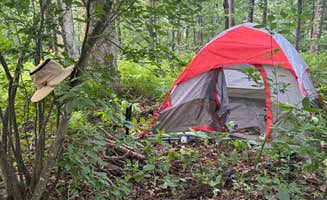Dispersed camping near Lyndhurst, Virginia offers direct access to the Appalachian Trail system with several entry points within a 40-minute drive. The region sits at elevations ranging from 1,200 to 4,000 feet, creating significant temperature variations between ridgeline and valley campsites. Spring runoff typically peaks in late March to early April, making many low-lying areas inaccessible during this period.
What to do
Fishing at stocked locations: Switzer Lake Dispersed Camping provides year-round fishing opportunities with specific regulations. "The fishing is decent, and we have caught some trout there in the past. There is a boat ramp at the lake, but only electric motors and paddle boats are allowed," notes one regular camper.
Hiking network access: The dispersed sites off Forest Road 812 connect to extensive trail systems. "There's a hike at the end of the road that takes you to a gorgeous summit & links to AT!" reports one visitor at George Washington National Forest off 812.
Wildlife observation: Early morning hours (5-7am) offer the best wildlife viewing opportunities. "The pond has a great little trail you can walk around and at night the stars are gorgeous. The water is also stocked with fish!" shares a Braley Pond visitor.
What campers like
Elevated viewpoints: Flagpole Knob offers panoramic views from one of the region's highest accessible campsites. "If you really wanna be alone this is the spot. Camped up there with just my dog and I doubt there was a single person for miles around. The sunset and sunrise views are insane," reports one camper.
Stream-adjacent sites: Many campers prefer the white noise and ambient cooling of water-adjacent sites. "Nice camping spot in George Washington NF. The spot was nice and flat, backed up to a little creek and had an established stone fire ring," notes a reviewer.
Stone features: Several sites feature unique stone structures built by previous visitors. "There was a fire ring and man made stone oven at the site we chose," reports a camper at Reservoir Road Dispersed Campsite.
What you should know
Vehicle requirements: Access varies dramatically by site and season. "Not difficult but definitely need at least a little bit of clearance," notes a Flagpole Knob visitor about their Subaru Outback's capability.
Site preparation needed: Many sites require cleanup before use. "Aside from the trash people had left from previous visits, it was perfect for a more primitive camping experience than a lot of modern campgrounds provided. We picked up and threw away the people's old trash btw," reports a visitor at Braley Pond Dispersed Camping & Day Use Area.
Water filtering essential: Stream water requires treatment. "This a US Forest Service site. Campsite is primitive: no facilities aside from vault toilets. Bring water treatment system," advises a frequent camper.
Timing considerations: Weekdays offer dramatically better site selection. "I was the only one here on a Saturday night. Very quiet and it was great to have the place to myself," notes a winter visitor.
Tips for camping with families
Child-friendly locations: Poor Farm Dispersed Recreation Area offers easier access and basic facilities. "There is a large clearing off of Hidden Valley Rd just past Poor Farm Camp A Rd that can easily accommodate multiple vehicles with 3 or 4 fire pits. In the spring, it is covered in wild hares," notes one visitor.
Easy access water play: Look for gradually sloping stream access points for safer water exploration. "The stream was cold and clear and beautiful. We'll be back!" shares a family camper.
Pit toilet availability: Some areas offer basic sanitation facilities. "The day use area is close enough to use the bathroom (just an open pit toilet, nothing fancy)," reports a parent who brought children camping.
Tips from RVers
Larger vehicle options: James River Wildlife Management Area - Dispersed Camping accommodates larger rigs with minimal restrictions. "After turning onto Midway Mills Lane from the northern end (route 626), there is a gravel access road about .5 miles down the road that is well-maintained. It almost immediately opens up into an open field where large rigs of any size can fit," explains one RVer.
Permit requirements: Verify permit needs before arrival. "You simply need to purchase either a daily or annual access pass from the DWR website and then report which days you will be staying at the WMA—it's currently $23 for the annual pass," notes a camper.
Road condition planning: Bring detailed maps showing access routes since conditions change seasonally. "Go slow as several sharp corners with huge drops and inexperienced drives coming towards you," warns a visitor to Switzer Lake.


